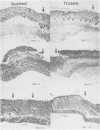Abstract
Circular, full-thickness dermal burn- and freeze-produced wounds were produced in rats to compare the difference in healing between the two types of thermal injuries. Contraction did not occur in wounds (n = 30) caused by freezing, while burn wounds (n = 30) contracted to less than one-third of original size by 21 days after injury. If the centers of the freeze-produced wounds (n = 12) were excised, contraction would then occur and proceed at the same rate as an open wound. Histologically, the degree of initial tissue destruction by the two types of injuries was similar. The burn wound contained only half the amount of collagen found in the freeze-produced wound. There was a greater and more rapid replacement of collagen in the burn wounds. With both injuries, the highest concentration of collagen was found on the fifteenth day and returned to normal by the twenty-eighth day. The burn wound contained three times the amount of collagen in normal skin, while the freeze-produced wound contained only 1 3/4 times the amount in normal skin. Contraction does not seem to occur in the healing of the freeze-injured skin because the slow removal and replacement of the residual matrix prevents contraction.
Full text
PDF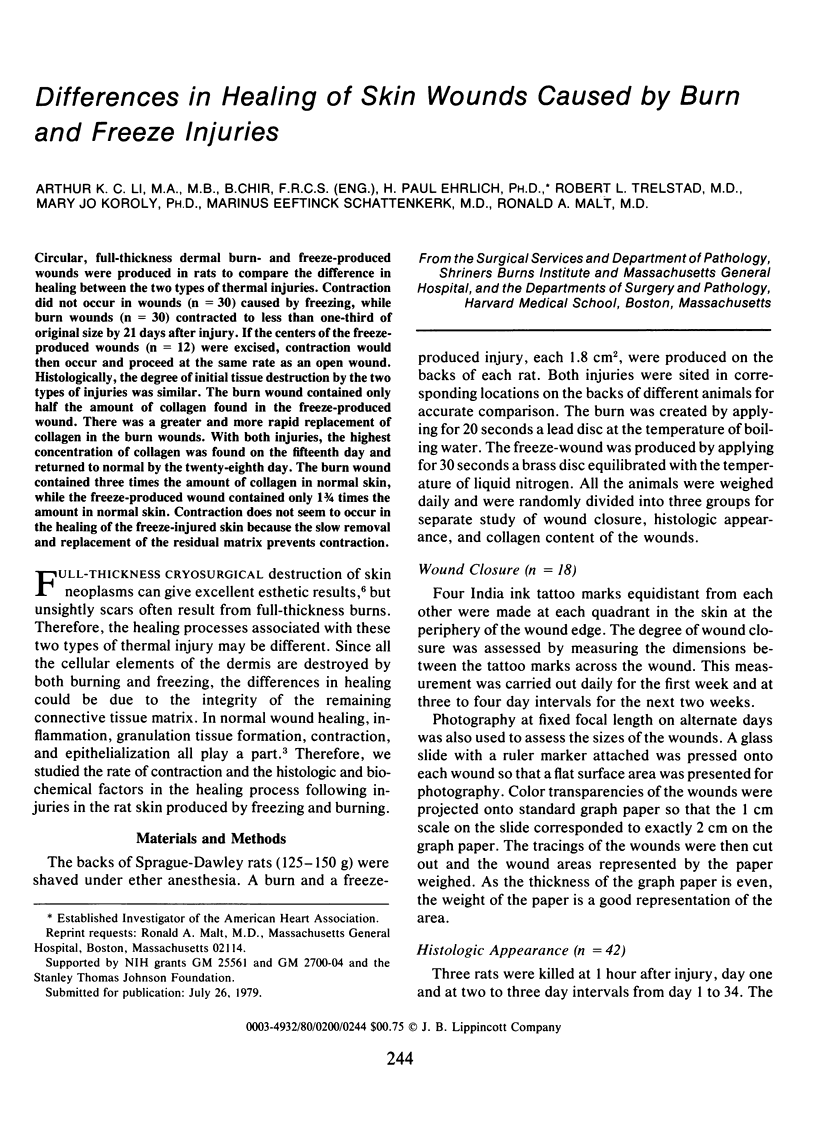
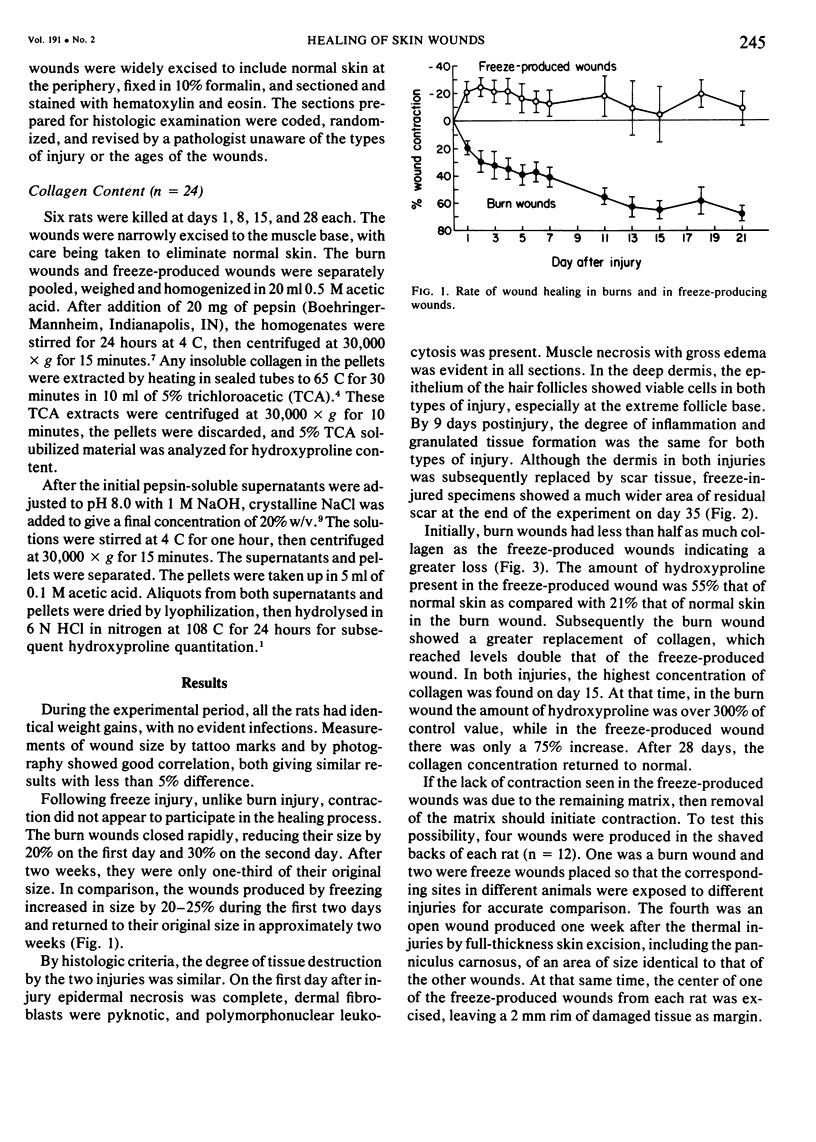
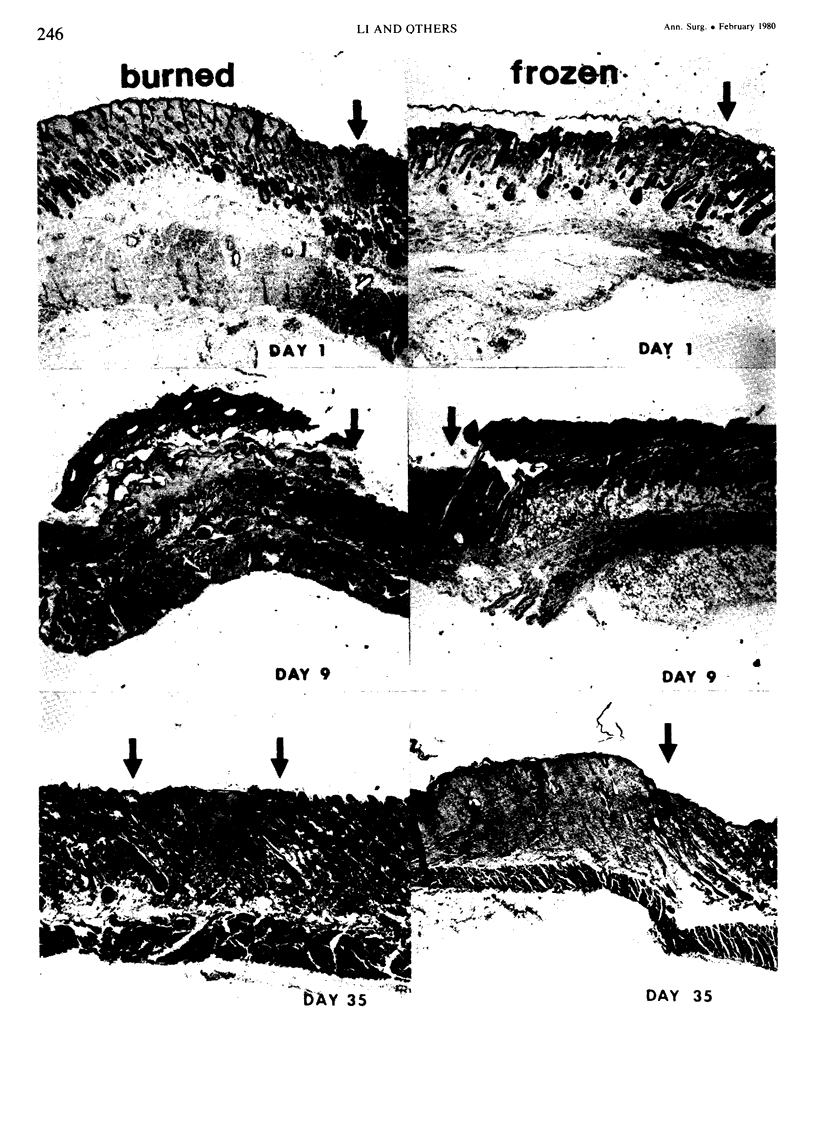
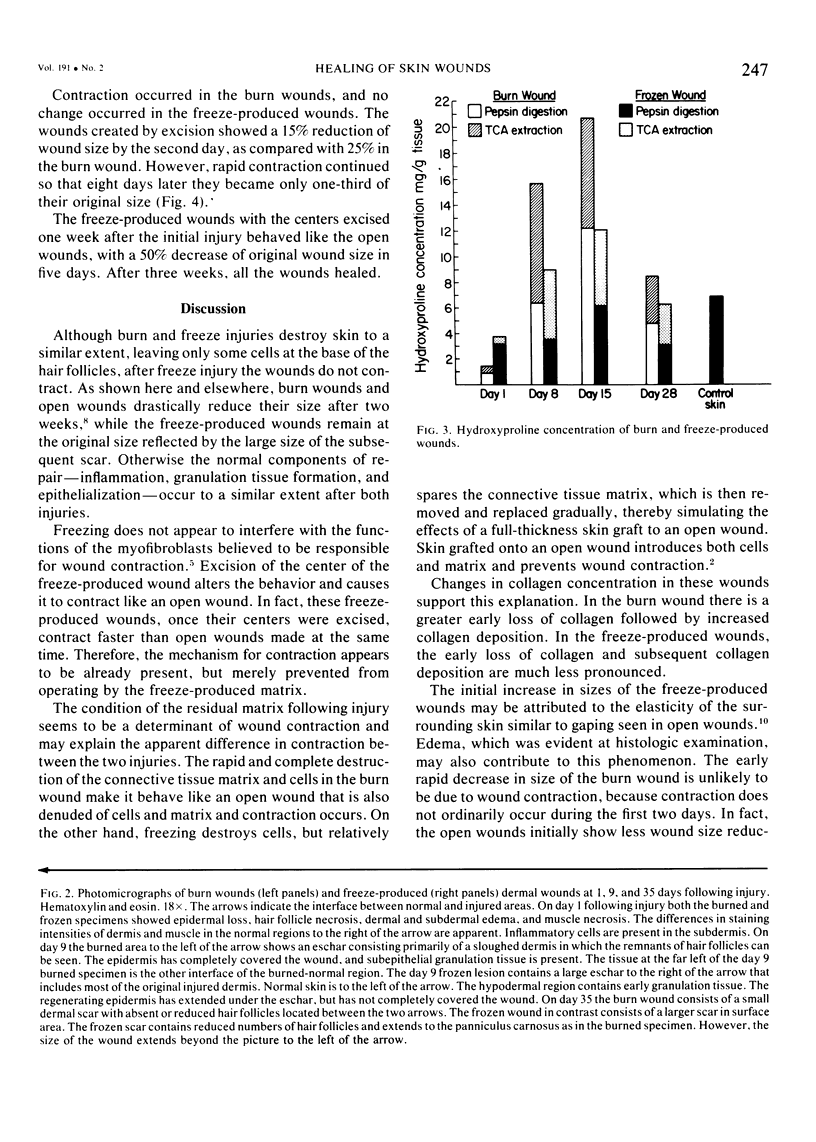
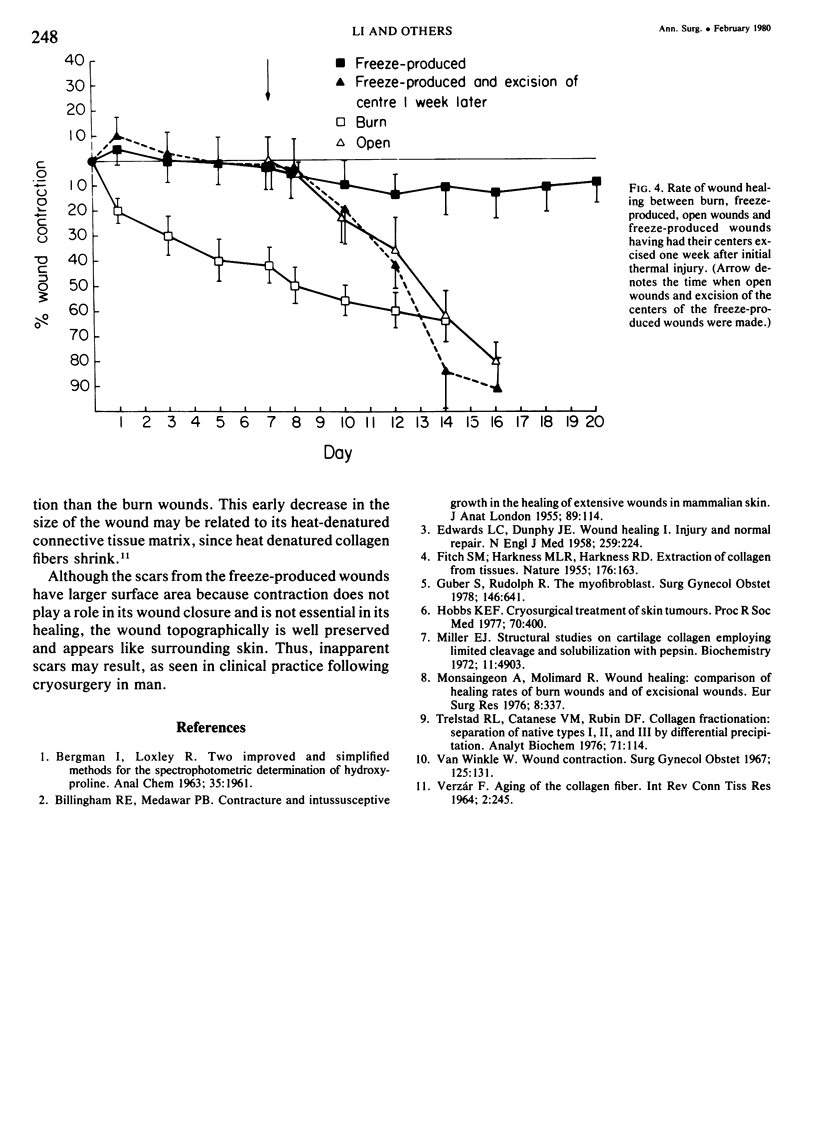
Images in this article
Selected References
These references are in PubMed. This may not be the complete list of references from this article.
- BILLINGHAM R. E., MEDAWAR P. B. Contracture and intussusceptive growth in the healing of extensive wounds in mammalian skin. J Anat. 1955 Jan;89(1):114–123. [PMC free article] [PubMed] [Google Scholar]
- EDWARDS L. C., DUNPHY J. E. Wound healing. I. Injury and normal repair. N Engl J Med. 1958 Jul 31;259(5):224–233. doi: 10.1056/NEJM195807312590506. [DOI] [PubMed] [Google Scholar]
- FITCH S. M., HARKNESS M. L., HARKNESS R. D. Extraction of collagen from tissues. Nature. 1955 Jul 23;176(4473):163–163. doi: 10.1038/176163a0. [DOI] [PubMed] [Google Scholar]
- Guber S., Rudolph R. The myofibroblast. Surg Gynecol Obstet. 1978 Apr;146(4):641–649. [PubMed] [Google Scholar]
- Hobbs K. E. Cryosurgical treatment of skin tumours. Proc R Soc Med. 1977 Jun;70(6):400–402. [PMC free article] [PubMed] [Google Scholar]
- Miller E. J. Structural studies on cartilage collagen employing limited cleavage and solubilization with pepsin. Biochemistry. 1972 Dec 19;11(26):4903–4909. doi: 10.1021/bi00776a005. [DOI] [PubMed] [Google Scholar]
- Monsaingeon A., Molimard R. Wound healing. Comparison of healing rates of burn wounds and of excisional wounds. Eur Surg Res. 1976;8(4):337–343. doi: 10.1159/000127878. [DOI] [PubMed] [Google Scholar]
- Trelstad R. L., Catanese V. M., Rubin D. F. Collagen fractionation: separation of native types I, II and III by differential precipitation. Anal Biochem. 1976 Mar;71(1):114–118. doi: 10.1016/0003-2697(76)90016-6. [DOI] [PubMed] [Google Scholar]
- Van Winkle W., Jr Wound contraction. Surg Gynecol Obstet. 1967 Jul;125(1):131–142. [PubMed] [Google Scholar]



